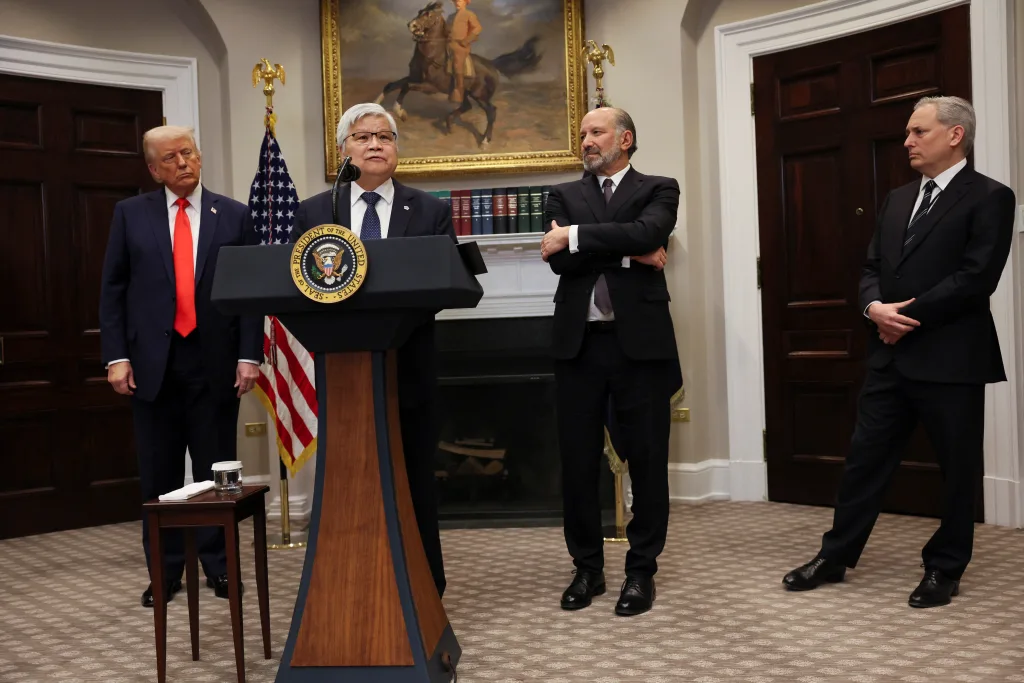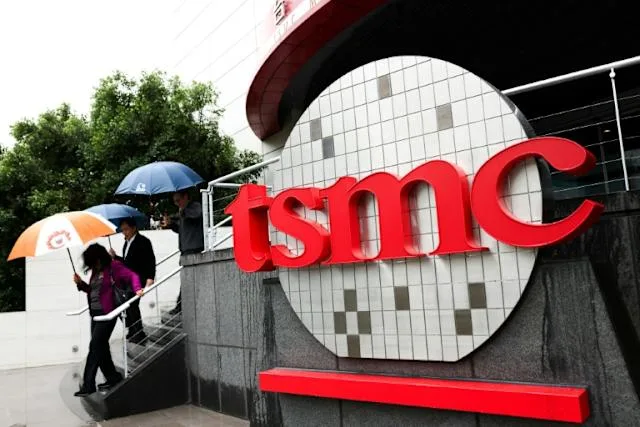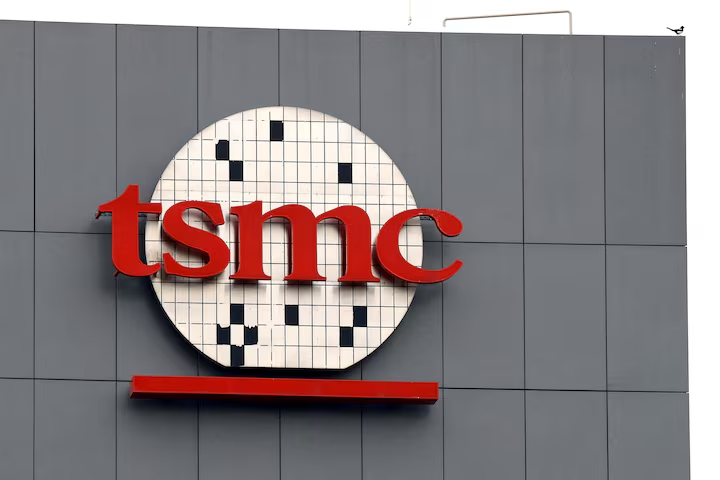Explore TSMC’s record-breaking Q1 2025 earnings amidst the AI chip demand surge and Trump’s semiconductor policies. What’s next for the chip giant?
Table of Contents

TSMC Rides AI Wave as Trump’s Policies Loom Large
Taiwan Semiconductor Manufacturing Company (TSMC) is set to report a staggering 54% jump in first-quarter profit, showcasing the company’s dominance in the AI chip market. However, the celebration might be short-lived, as former President Donald Trump’s trade policies cast a long shadow over the semiconductor industry’s future.
Key Takeaways:
- TSMC’s Q1 2025 profit expected to hit T$347.8 billion ($10.74 billion)
- AI chip demand fuels growth, with customers like Apple and Nvidia
- Trump’s tariff threats and criticism of Taiwan’s chip dominance raise concerns
- TSMC plans massive investments in US factories to mitigate geopolitical risks
The AI Boom: TSMC’s Golden Ticket
TSMC’s remarkable performance in Q1 2025 is largely attributed to the surging demand for advanced chips used in artificial intelligence applications. As the world’s largest contract chipmaker, TSMC has positioned itself at the forefront of the AI revolution, supplying cutting-edge semiconductors to tech giants like Apple and Nvidia.
TSMC’s Q1 2025 Performance at a Glance
| Metric | Q1 2024 | Q1 2025 (Estimated) | Growth |
|---|---|---|---|
| Net Profit | T$225.5 billion | T$347.8 billion | 54% |
| Revenue | N/A | Surged (exact figure TBA) | N/A |
| Capital Expenditure | N/A | $38-42 billion (full year) | Up to 41% YoY |
Trump’s Trade Tensions: A Double-Edged Sword
While TSMC basks in its financial success, the specter of Trump’s trade policies looms large. The former president’s recent statements have sent ripples through the semiconductor industry:
- Tariff Threats: Trump warned of potential 100% taxes on TSMC if it doesn’t build factories in the US.
- Smartphone Scrutiny: The exclusion of smartphones and computers from China tariffs may be short-lived.
- National Security Probe: A planned investigation into the semiconductor sector raises concerns about future trade restrictions.
TSMC’s response to these challenges has been swift and strategic. The company announced a $100 billion investment in US factories, on top of $65 billion already pledged for three plants in Arizona. This move aims to mitigate geopolitical risks and secure favorable treatment from the US government.

The Global Chip Chessboard: TSMC’s Next Moves
As TSMC navigates the complex interplay of technological advancement and geopolitical tensions, several key factors will shape its future:
- Overseas Expansion: Analysts expect TSMC to double down on foreign investments, despite potential margin dilution.
- US-China Dynamics: The ongoing trade tensions between the world’s two largest economies will continue to influence TSMC’s strategy.
- AI-Driven Demand: The insatiable appetite for AI chips is likely to sustain TSMC’s growth in the near term.
- Supply Chain Resilience: TSMC’s efforts to diversify its manufacturing base will be crucial in mitigating future disruptions.
Expert Insights: Navigating Choppy Waters
Industry analysts are closely monitoring TSMC’s performance and strategic decisions. SemiAnalysis analyst Sravan Kundojjala notes, “The company will likely double down on overseas fab investments to mitigate the geopolitical risk, despite two to three percentage points of gross margin dilution for the next five years.”
Meanwhile, Cathay Futures analyst Venson Tsai highlights the potential ripple effects of US-China tensions, particularly concerning Apple’s iPhone production in China. “If the iPhone can’t be sold, then TSMC’s chips can’t either,” Tsai warns.
The Road Ahead: Balancing Growth and Geopolitics
As TSMC prepares to announce its Q1 2025 earnings, the company finds itself at a critical juncture. Its ability to maintain technological leadership while navigating complex international relations will be key to its continued success.

Investors and industry watchers will be eagerly awaiting TSMC’s guidance for the rest of 2025, including:
- Updated revenue projections
- Capital expenditure plans
- Strategies for mitigating geopolitical risks
- Progress on US factory investments
FAQs: TSMC’s Q1 2025 Earnings and Trump’s Trade Policies
Q: What is driving TSMC’s strong Q1 2025 performance?
A: The surge in demand for advanced chips used in AI applications, coupled with TSMC’s technological leadership, has fueled the company’s impressive growth.
Q: How might Trump’s trade policies affect TSMC?
A: Trump’s threats of tariffs and calls for increased US chip production could pressure TSMC to accelerate its investments in US-based manufacturing facilities.
Q: What is TSMC doing to mitigate geopolitical risks?
A: TSMC has announced significant investments in US factories, totaling $165 billion, to diversify its manufacturing base and strengthen its position in the US market.
Q: Could TSMC’s expansion into the US affect its profitability?
A: Analysts suggest that overseas investments could dilute TSMC’s gross margins by 2-3 percentage points over the next five years, but these moves are seen as necessary to mitigate long-term geopolitical risks.
Q: How dependent is TSMC on the Chinese market?
A: While exact figures vary, TSMC has been working to reduce its reliance on Chinese customers, particularly in light of ongoing US-China trade tensions.
As TSMC continues to navigate the complex landscape of global semiconductor production, its Q1 2025 earnings report will provide crucial insights into the company’s resilience and adaptability in the face of technological and geopolitical challenges.








